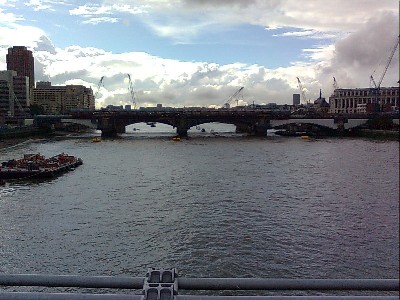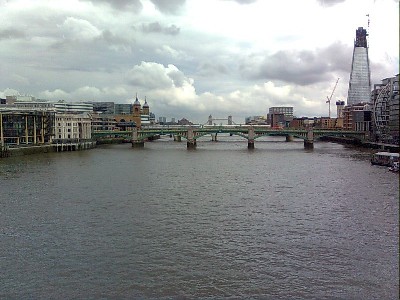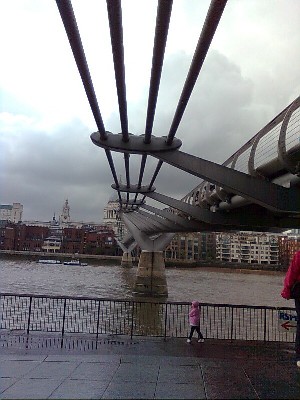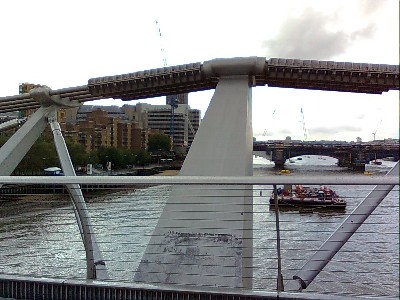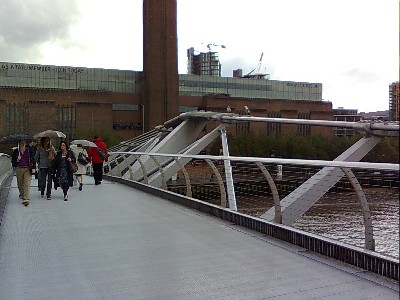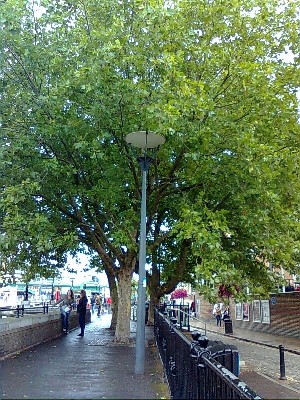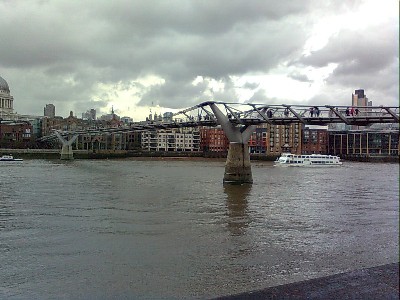
The Millennium Bridge was the first bridge to be built over the Thames in over a hundred years. It was to be a footbridge where people could enjoy the views up and down the Thames without the noise of cars or trains. A competition was held and the winning design was chosen from the 227 entries. Construction began in April 1999. It is a suspension bridge with steel cables to the side instead of above as with traditional suspension bridges. It has two river piers and is made of three main sections. The four metre wide deck is made of aluminium. On 8 June 2000 the bridge was finished and the addition of the lighting was celebrated with a spectacular firework display. Two days later it was officially opened to the public but as the crowds started walking over the bridge it started to sway from side to side. The bridge's movements were caused by a phenomenon known as synchronous lateral excitation whereby the natural sway of people walking on the bridge caused small sideways oscillations in the bridge which in turn caused people to sway in step. With 2,000 people on the bridge at one time, the sway got bigger and bigger until people had to hold onto the handrails to stay upright. So the bridge was closed and checked by engineers who declared it safe and it was reopened but with a limit to the numbers of people allowed on it at any one time, and after just two more days it was closed again. During 2001, 89 dampers were installed, most of them under the deck where they are almost invisible. The most visible are the diagonal ones on either side of the pier arms, but they fit in so well that they look like part of the original design. The bridge finally reopened on 22 February 2002. |
